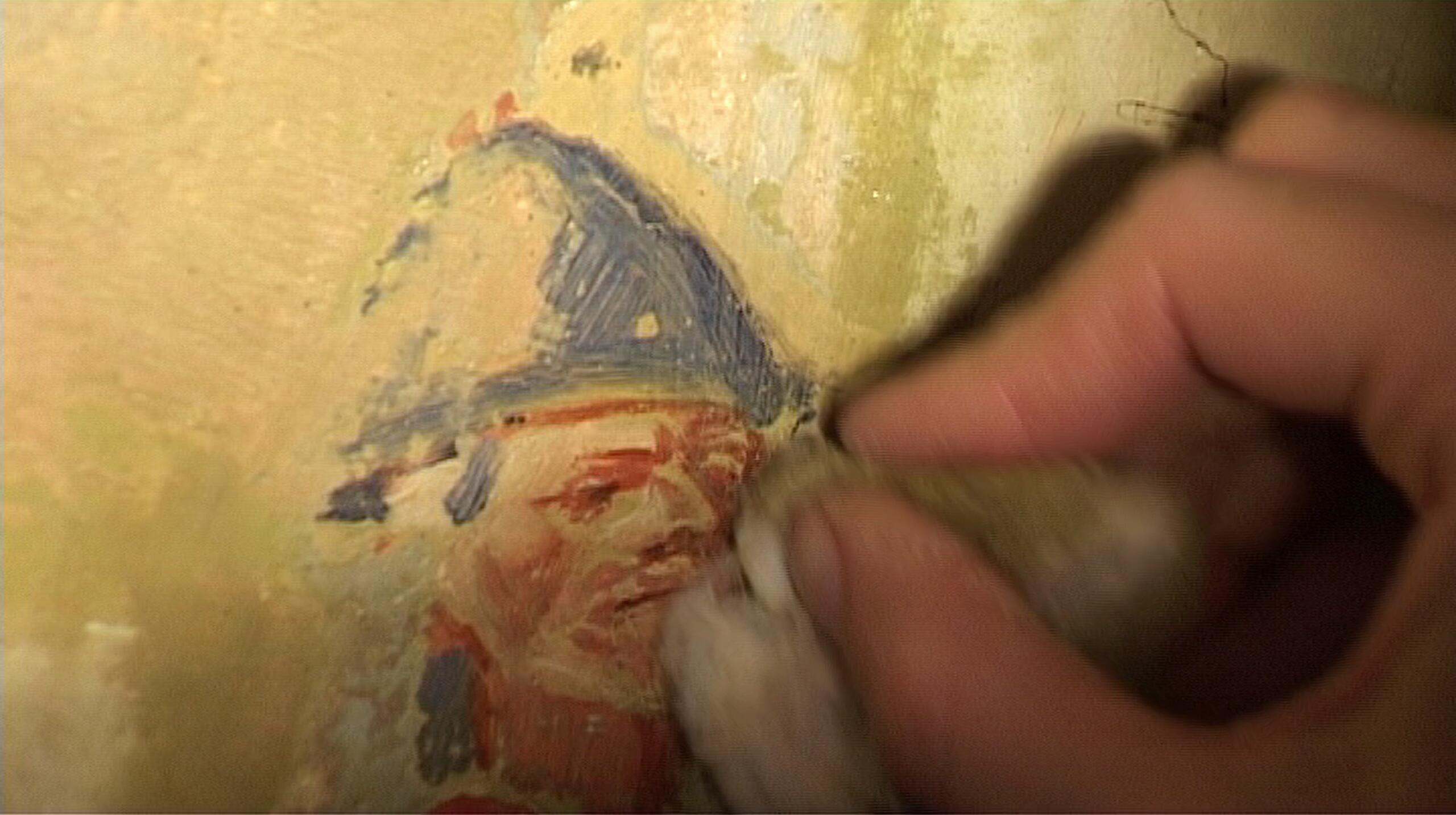

Bruno Schulz (1892-1942):
An Artist, a Murder, and the Hijacking of History
Benjamin Balint and Ori Z Soltes in Conversation
April 3, 2024 @ 12:00 pm - 1:00 pm
| FreeBenjamin Balint, author of the National Jewish Book Award winning book, and Georgetown University professor Ori Z Soltes in conversation.
Bruno Schulz is renowned as a master of twentieth-century imaginative fiction. Isaac Bashevis Singer called him “one of the most remarkable writers who ever lived.” But Schulz was also an exceptionally talented graphic artist whose masochistic drawings would catch the eye of a sadistic Nazi officer. Schulz’s art became the currency in which he bought life.
Image above: Bruno Schulz, Mural, 1941-1942. Drohobycz. Discovery Benjamin Geissler, 2001.
Drawing on extensive new reporting and archival research, Benjamin Balint chases the inventive murals Schulz painted on the walls of an SS villa—the last traces of his vanished world—into multiple dimensions of the artist’s life and afterlife. Sixty years after Schulz was murdered, those murals were miraculously rediscovered, only to be secretly smuggled by Israeli agents to Jerusalem. The ensuing international furor summoned broader perplexities, including about who has the right to curate orphaned artworks and to construe their meanings.

Bruno Schulz, ‘Encounter: A Young Jewish Man and Two Women in an Urban Alley,’ 1920, oil on cardboard. (Adam Mickiewicz Museum of Literature, Warsaw)

Bruno Schulz, ‘The Enchanted Town II,’ 1920-1922. (Courtesy)
Benjamin Balint, a writer living in Jerusalem, is the author most recently of Bruno Schulz: An Artist, a Murder, and the Hijacking of History. The book won this year’s National Jewish Book Award in biography and was named a New York Times Book Review Editors’ Choice. His previous book, Kafka’s Last Trial, awarded the 2020 Sami Rohr Prize, has recently been published in an updated German edition by S. Fischer Verlag.
Ori Z. Soltes teaches at Georgetown University across a range of disciplines, from art history and theology to philosophy and political history. He is the former Director and Curator of the B’nai B’rith Klutznick National Jewish Museum, and has curated more than 90 exhibitions there and in other venues across the country and overseas. He is also the author of over 280 books, articles, exhibition catalogues, and essays on diverse topics. Among his books are Fixing the World: Jewish American Painters in the Twentieth Century; The Ashen Rainbow: Essays on the Arts and the Holocaust; Our Sacred Signs: How Jewish, Christian and Muslim Art Draw from the Same Source; Tradition and Transformation: Three Millennia of Jewish Art and Architecture; and Between Pasts and Future: A Conceptual History of Israeli Art.

Bruno Schulz in 1935. (Collection of the University of Warsaw Library)

Book publication by W.W. Norton & Company 2023


